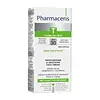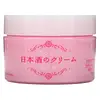What's inside
What's inside
 Key Ingredients
Key Ingredients

 Benefits
Benefits

 Concerns
Concerns

 Ingredients Side-by-side
Ingredients Side-by-side

Water
Skin ConditioningEthylhexyl Methoxycinnamate
UV AbsorberC12-15 Alkyl Benzoate
AntimicrobialDiethylamino Hydroxybenzoyl Hexyl Benzoate
UV FilterPentylene Glycol
Skin ConditioningGlycerin
HumectantCyclopentasiloxane
EmollientCetearyl Alcohol
EmollientEthylhexyl Triazone
UV AbsorberCyclohexasiloxane
EmollientCetyl Alcohol
EmollientPEG-100 Stearate
Methylene Bis-Benzotriazolyl Tetramethylbutylphenol
UV FilterSodium Polyacrylate
AbsorbentCetearyl Glucoside
EmulsifyingDimethicone
EmollientInulin
Skin ConditioningHydroxyethyl Urea
HumectantParfum
MaskingPropylene Glycol
HumectantLonicera Caprifolium Flower Extract
PerfumingAllantoin
Skin ConditioningMandelic Acid
AntimicrobialPolysilicone-11
Decyl Glucoside
CleansingAlpha-Glucan Oligosaccharide
CleansingLonicera Japonica Flower Extract
Skin ConditioningAmmonium Lactate
BufferingBHA
AntioxidantSalvia Officinalis Extract
AntimicrobialGlucose
HumectantSalix Alba Bark Extract
AstringentXanthan Gum
EmulsifyingPotassium Sorbate
PreservativeSodium Benzoate
MaskingWater, Ethylhexyl Methoxycinnamate, C12-15 Alkyl Benzoate, Diethylamino Hydroxybenzoyl Hexyl Benzoate, Pentylene Glycol, Glycerin, Cyclopentasiloxane, Cetearyl Alcohol, Ethylhexyl Triazone, Cyclohexasiloxane, Cetyl Alcohol, PEG-100 Stearate, Methylene Bis-Benzotriazolyl Tetramethylbutylphenol, Sodium Polyacrylate, Cetearyl Glucoside, Dimethicone, Inulin, Hydroxyethyl Urea, Parfum, Propylene Glycol, Lonicera Caprifolium Flower Extract, Allantoin, Mandelic Acid, Polysilicone-11, Decyl Glucoside, Alpha-Glucan Oligosaccharide, Lonicera Japonica Flower Extract, Ammonium Lactate, BHA, Salvia Officinalis Extract, Glucose, Salix Alba Bark Extract, Xanthan Gum, Potassium Sorbate, Sodium Benzoate
Water
Skin ConditioningGlycerin
HumectantParaffinum Liquidum
EmollientCetyl Alcohol
EmollientGlyceryl Stearate
EmollientStearyl Alcohol
EmollientRice Ferment Filtrate
Skin ConditioningGlutamic Acid
HumectantArginine
MaskingLeucine
Skin ConditioningGlycine
BufferingCeramide EOP
Skin ConditioningCeramide NP
Skin ConditioningCeramide AP
Skin ConditioningPlacental Protein
HumectantArbutin
AntioxidantDipotassium Glycyrrhizate
HumectantOryza Sativa Bran Oil
EmollientOryza Sativa Germ Oil
EmollientSimmondsia Chinensis Seed Oil
EmollientSqualane
EmollientPropanediol
SolventDimethicone
EmollientCholesterol
EmollientPhytosphingosine
Skin ConditioningSodium Lauroyl Lactylate
EmulsifyingTocopherol
AntioxidantCeteth-20
CleansingSteareth-20
CleansingPEG-75 Stearate
Carbomer
Emulsion StabilisingXanthan Gum
EmulsifyingAcrylates/C10-30 Alkyl Acrylate Crosspolymer
Emulsion StabilisingDisodium EDTA
Potassium Hydroxide
BufferingCitric Acid
BufferingSodium Citrate
BufferingPhenoxyethanol
PreservativeMethylparaben
PreservativeEthylparaben
PreservativeParfum
MaskingWater, Glycerin, Paraffinum Liquidum, Cetyl Alcohol, Glyceryl Stearate, Stearyl Alcohol, Rice Ferment Filtrate, Glutamic Acid, Arginine, Leucine, Glycine, Ceramide EOP, Ceramide NP, Ceramide AP, Placental Protein, Arbutin, Dipotassium Glycyrrhizate, Oryza Sativa Bran Oil, Oryza Sativa Germ Oil, Simmondsia Chinensis Seed Oil, Squalane, Propanediol, Dimethicone, Cholesterol, Phytosphingosine, Sodium Lauroyl Lactylate, Tocopherol, Ceteth-20, Steareth-20, PEG-75 Stearate, Carbomer, Xanthan Gum, Acrylates/C10-30 Alkyl Acrylate Crosspolymer, Disodium EDTA, Potassium Hydroxide, Citric Acid, Sodium Citrate, Phenoxyethanol, Methylparaben, Ethylparaben, Parfum
 Reviews
Reviews

Ingredients Explained
These ingredients are found in both products.
Ingredients higher up in an ingredient list are typically present in a larger amount.
Cetyl Alcohol is a fatty alcohol. Fatty Alcohols are most often used as an emollient or to thicken a product.
Its main roles are:
Though it has "alcohol" in the name, it is not related to denatured alcohol or ethyl alcohol.
The FDA allows products labeled "alcohol-free" to have fatty alcohols.
Learn more about Cetyl AlcoholDimethicone is a type of synthetic silicone created from natural materials such as quartz.
What it does:
Dimethicone comes in different viscosities:
Depending on the viscosity, dimethicone has different properties.
Ingredients lists don't always show which type is used, so we recommend reaching out to the brand if you have questions about the viscosity.
This ingredient is unlikely to cause irritation because it does not get absorbed into skin. However, people with silicone allergies should be careful about using this ingredient.
Note: Dimethicone may contribute to pilling. This is because it is not oil or water soluble, so pilling may occur when layered with products. When mixed with heavy oils in a formula, the outcome is also quite greasy.
Learn more about DimethiconeGlycerin is already naturally found in your skin. It helps moisturize and protect your skin.
A study from 2016 found glycerin to be more effective as a humectant than AHAs and hyaluronic acid.
As a humectant, it helps the skin stay hydrated by pulling moisture to your skin. The low molecular weight of glycerin allows it to pull moisture into the deeper layers of your skin.
Hydrated skin improves your skin barrier; Your skin barrier helps protect against irritants and bacteria.
Glycerin has also been found to have antimicrobial and antiviral properties. Due to these properties, glycerin is often used in wound and burn treatments.
In cosmetics, glycerin is usually derived from plants such as soybean or palm. However, it can also be sourced from animals, such as tallow or animal fat.
This ingredient is organic, colorless, odorless, and non-toxic.
Glycerin is the name for this ingredient in American English. British English uses Glycerol/Glycerine.
Learn more about GlycerinParfum is a catch-all term for an ingredient or more that is used to give a scent to products.
Also called "fragrance", this ingredient can be a blend of hundreds of chemicals or plant oils. This means every product with "fragrance" or "parfum" in the ingredients list is a different mixture.
For instance, Habanolide is a proprietary trade name for a specific aroma chemical. When used as a fragrance ingredient in cosmetics, most aroma chemicals fall under the broad labeling category of “FRAGRANCE” or “PARFUM” according to EU and US regulations.
The term 'parfum' or 'fragrance' is not regulated in many countries. In many cases, it is up to the brand to define this term.
For instance, many brands choose to label themselves as "fragrance-free" because they are not using synthetic fragrances. However, their products may still contain ingredients such as essential oils that are considered a fragrance by INCI standards.
One example is Calendula flower extract. Calendula is an essential oil that still imparts a scent or 'fragrance'.
Depending on the blend, the ingredients in the mixture can cause allergies and sensitivities on the skin. Some ingredients that are known EU allergens include linalool and citronellol.
Parfum can also be used to mask or cover an unpleasant scent.
The bottom line is: not all fragrances/parfum/ingredients are created equally. If you are worried about fragrances, we recommend taking a closer look at an ingredient. And of course, we always recommend speaking with a professional.
Learn more about ParfumWater. It's the most common cosmetic ingredient of all. You'll usually see it at the top of ingredient lists, meaning that it makes up the largest part of the product.
So why is it so popular? Water most often acts as a solvent - this means that it helps dissolve other ingredients into the formulation.
You'll also recognize water as that liquid we all need to stay alive. If you see this, drink a glass of water. Stay hydrated!
Learn more about WaterXanthan gum is used as a stabilizer and thickener within cosmetic products. It helps give products a sticky, thick feeling - preventing them from being too runny.
On the technical side of things, xanthan gum is a polysaccharide - a combination consisting of multiple sugar molecules bonded together.
Xanthan gum is a pretty common and great ingredient. It is a natural, non-toxic, non-irritating ingredient that is also commonly used in food products.
Learn more about Xanthan Gum